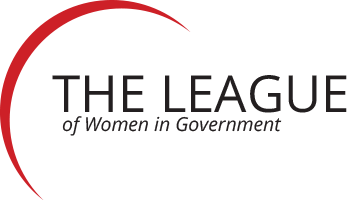How Libraries and Police Departments are “Similar?”
By Amber Cameron, Strategic Operations Manager – City of Palo Alto, CA
Both experience something called Occupational Segregation…
“Tell your grandfather about all the women’s stuff you’ve been working on,” my mom says at a holiday family get together. After briefly talking about the ICMA conference this year, #13percent and some research on the wage gap, he says, “I’m going to send you an article I read about that.”
In my mind I’m picturing a texted link, or maybe even an email in my inbox…instead a few weeks later I get an envelope with a clipping from the newspaper! As an official member of the millennial generation, it’s the only piece of snail mail I’ve had in months that wasn’t junk, and the only newspaper I’ve touched since getting some to protect my floors from a new kitten a few years back.
No matter how retro the format may have been, the content was apt. It outlined information from a study the newspaper conducted on gender balance in different fields throughout the City of Austin and covering something I don’t think we pay enough attention to – Occupational Segregation.
This is the academic term for the phenomenon of gender-dominated fields. For example, Police Departments are primarily male, while Libraries are primarily female employees. Austin was 77% men in their Police Department, and 57% women in Library.
Take a minute to check in with what you know about your City or agency regarding gender balance. What proportion of your employees are female overall? Are there certain departments that have more men or more women? Can you even get the data from your HR department?
If your whole agency is about half and half, does it matter if there are more women in the library department and more men in police department?
It does, and here’s why:
- The wage gap: Simply put, librarians make less than police officers. While we may be making progress to achieve pay equity between employees with the same job title, we still have a ways to go on the aggregate because of the value we ascribe to certain fields. Austin’s wage gap, measured by the median pay of male to that of female employees, was calculated at 14%. According to the EEOC, the national wage gap for City employees was 17% in 2013.
- Team diversity benefits: Organizations, departments and teams that are gender balanced have been shown to have better task performance, creativity, innovation, and reduced instances of stereotyping and harassment. This makes your organization a better place to work, provides a better level of service for your community, and could even result in major breakthroughs for improving local government.
- Pipeline for leadership: To make it to the big chair people need experience and the ability to move up within departments. Those 23% of workers in the Austin Police Department that are women are mostly not officers. With only 10% of all sworn positions held by women, most of the women in the department are in support and administrative roles. What does their path to management look like? I can tell you their opportunities are few and far between, and often require hopping between departments which presents its own challenges.
So next time you’re chatting about #13percent, meeting with your Human Resources Director or Executive team, I encourage you to start talking about look at gender balance at all levels.
To read more about the City of Austin’s gender gap, you can find the article series here .
_____
The League of Women in Government would love to hear YOUR story! To learn more about our Guest Blogger series click HERE or email us at LeagueWomenGov@gmail.com.


